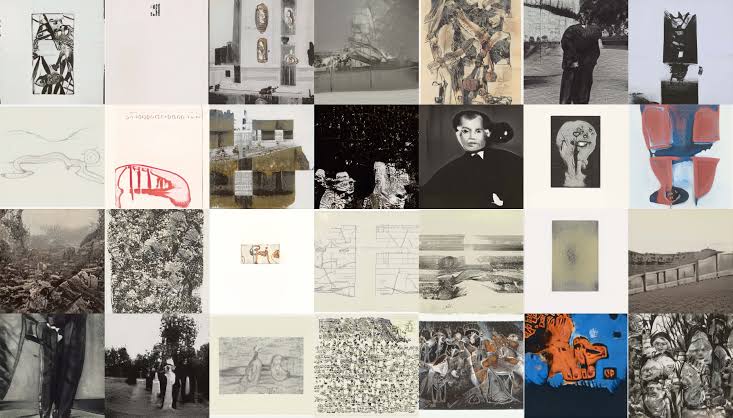Explore the evolution of AI art, from its early beginnings with algorithmic and computer-generated art to the revolutionary use of Generative Adversarial Networks (GANs). Discover how AI has transformed creative processes and what the future holds for this innovative field, highlighting key milestones and influential developments in AI-driven artistic expression.
The Progression of AI Artwork A Look Back in Time.
Introduction
Artificial Intelligence (AI) has brought about changes, in various domains such as art. The idea of AI generated art utilizing algorithms and machine learning to produce visuals has progressed significantly throughout history. From initial trials to modern day creations AI art showcases the pace of technological development and its increasing impact on creativity. This article offers a look into the history of AI art evolution underscoring milestones, technological progress and the impact of artists who have contributed to this groundbreaking area.
Early Beginnings
The concept of utilizing computers for artistic creation can be traced, back to the 1950s and 1960s. Visionaries such as Harold Cohen and Frieder Nake delved into the fusion of technology and imagination. Cohen's notable work AARON stands as one of the pioneering AI applications crafted to produce visual art. Through the use of rules and algorithms AARON showcased the capability of computers to generate visually appealing creations. In a similar vein Nake ventured into art by instructing a computer to generate shapes and patterns underscoring the possibilities offered by creativity.
The Rise of Algorithmic Art
The 70s and 80s witnessed a progression, in the realm of art. During this period artists and researchers delved into the use of algorithms and computer generated imagery. The introduction of fractals a mathematical discovery from the 1970s gained traction in art. Fractals, known for their self similarity and complexity enabled artists to craft intricate patterns and designs using algorithms.
With the rise of computers and graphic software in the 1980s digital art became more accessible to creators. Software like Adobe Illustrator and Photoshop offered tools for image creation and manipulation empowering artists to explore generated art on a larger scale. This era also saw the formation of communities and the emergence of platforms dedicated to sharing and discussing digital artworks.
The Emergence of Machine Learning
In the 1990s and early 2000s there were advancements, in machine learning and artificial intelligence. Researchers started looking into how neural networks, which are algorithms inspired by the brain could be used for creating art. During this time algorithms were developed that could learn from data and produce artwork mimicking the styles of famous artists.
A notable instance is the project by artist and researcher Scott Draves known as Electric Sheep. This project employed a system to generate evolving digital art using techniques called "genetic algorithms." People worldwide contributed their computing resources to create and refine visual designs leading to a collaborative and constantly changing collection of digital art.
The emergence of Generative Adversarial Networks (GANs) marked a point in this evolution.
The introduction of Generative Adversarial Networks (GANs) in 2014 was a significant milestone in the realm of AI art. These networks consist of two components—a generator and a discriminator—that collaborate to produce and assess images. The generator is responsible for creating new visuals while the discriminator evaluates their quality and authenticity. Through a process of training GANs can generate artworks that are incredibly lifelike and visually captivating.
A notable example showcasing the use of GANs in art is the creation of "Portrait of Edmond de Belamy" by the art collective Obvious based in Paris. This portrait, crafted by a GAN trained on a collection of historical portraits, fetched a price of $432,500 at an auction in 2018. The success of this artwork underscored the growing recognition and commercialization of AI generated art.
Contemporary AI Art
In the years AI art has been evolving with technology advancements enabling forms of expression. Artists are now utilizing AI to delve into creative opportunities like interactive installations, generative design and real time data visualization. AI art has transcended beyond images; it now encompasses engaging and immersive experiences that captivate audiences in ways.
The integration of AI in art has sparked debates surrounding authorship and creativity. With AI's growing ability to create art akin to human ingenuity questions arise regarding the artists role and the essence of creativity itself. Some contend that AI art challenges established concepts of authorship and artistic intention while others view it as a medium that complements and enriches creativity.
The Future of AI Art
Looking ahead into the future the world of AI art is brimming, with possibilities. As machine learning algorithms progress AI is set to take on a role in the realm of creativity. Artists and tech enthusiasts are delving into ways to combine AI with cutting emerging technologies like reality and augmented reality. This fusion aims to craft art experiences that are both immersive and interactive. Moreover the increasing availability of AI tools and platforms is opening up opportunities for artists and hobbyists alike. With experimentation with AI technology we can expect a rich and dynamic array of AI generated artworks. The collaboration between humans and machines in the artistic journey is poised to give rise to forms of creativity and expression, that we have yet to envision.
Conclusion
The progression of AI artistry showcases the interplay, between innovation and imagination. Ranging algorithmic trials to modern GAN crafted artworks AI art has revolutionized our perception and creation of visual artistry. With technology's relentless march forward the potential, for AI art seems boundless presenting artists with avenues to delve into and expand the horizons of creativity. Grasping this historical context offers insights, into the evolving conversation surrounding art and technology underscoring AI's profound influence, on the future of creative expression.
